Flinders Ranges National Park
The Flinders Ranges National Park is one of the most stunning natural landscapes in Australia, located in the heart of South Australia. It is a must-visit destination for anyone who loves the great outdoors and is looking for a unique adventure.
 31395 Pioneering Spirit
31395 Pioneering Spirit
The Flinders Ranges is a landscape of rugged beauty, from its deep gorges and dramatic mountain ranges to its vast plains and arid deserts. The region is home to a unique ecosystem of plants and animals, some of which are found nowhere else in the world. Visitors can enjoy a range of activities, from hiking and camping to scenic drives and wildlife watching.
 69544 Aerial Image of Wilpena Pound
69544 Aerial Image of Wilpena Pound
A scenic flight over Wilpena Pound is an experience that should not be missed by any photography enthusiast. This natural amphitheatre is a stunning sight from above, and with the door off the plane, you'll have an unobstructed view and the ability to capture amazing aerial shots. The unique geological features and striking contrasts between the red earth and greenery create a mesmerizing scene that is simply unforgettable. As you soar through the sky, you can also spot other landmarks such as St Mary Peak, the highest point in the Flinders Ranges, the stunning Brachina Gorge and the Heysen Range.
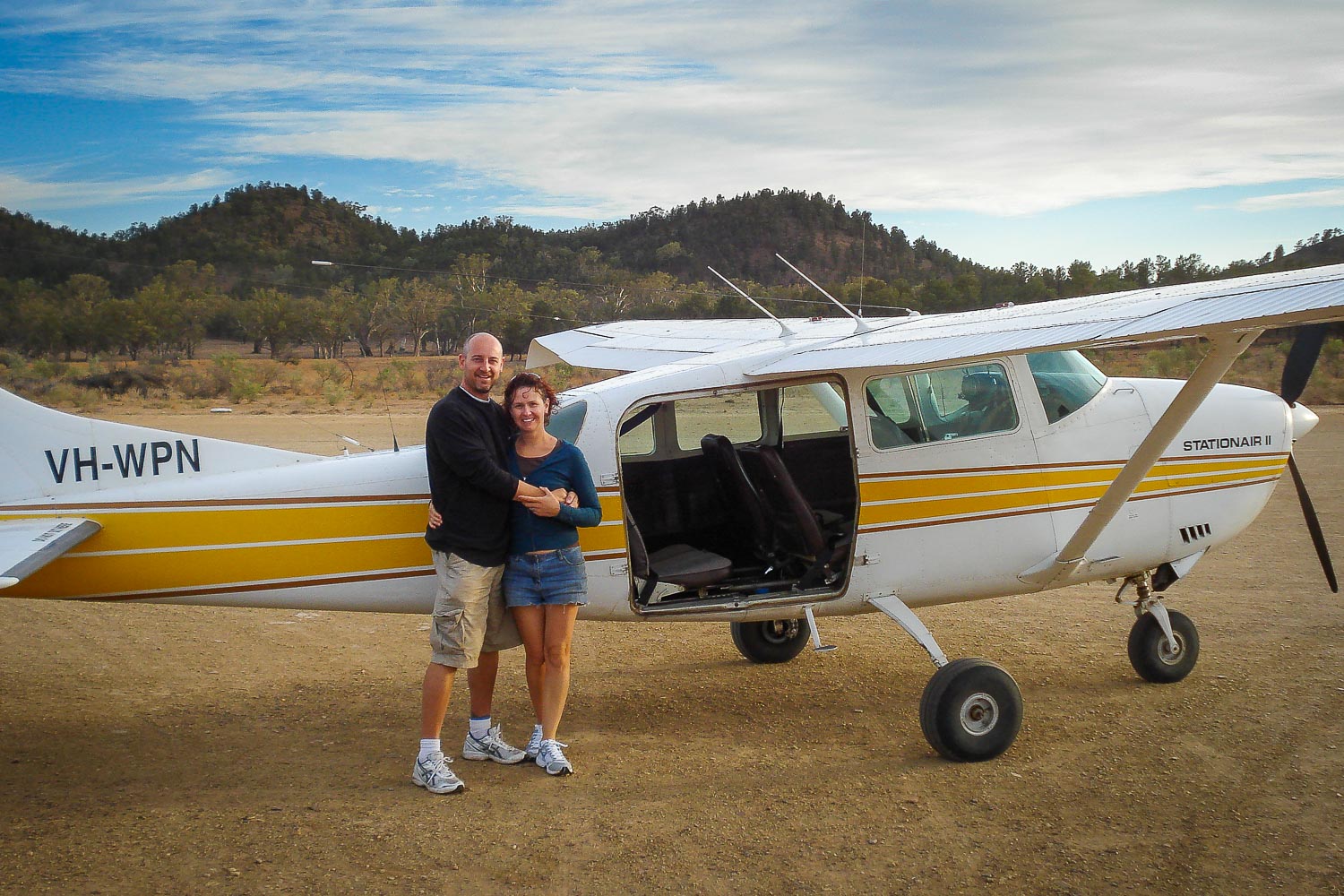 Ready for take off
Ready for take off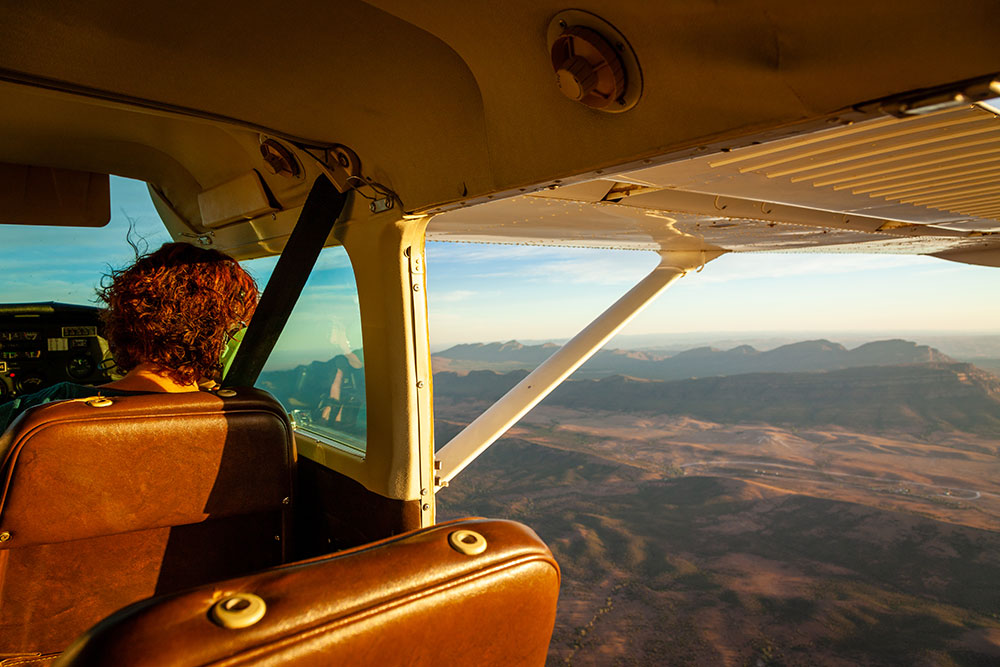 69546 Flight over Wilpena Pound
69546 Flight over Wilpena Pound
Wilpena Pound is the heart of the Flinders Ranges and a great place to start your adventure. This natural amphitheatre is surrounded by some of the highest peaks in the range and is a great spot for hiking, wildlife watching and enjoying the incredible views. There are also many other great places to visit, such as the Brachina Gorge, the Alligator Gorge and the Arkaroola Wilderness Sanctuary.
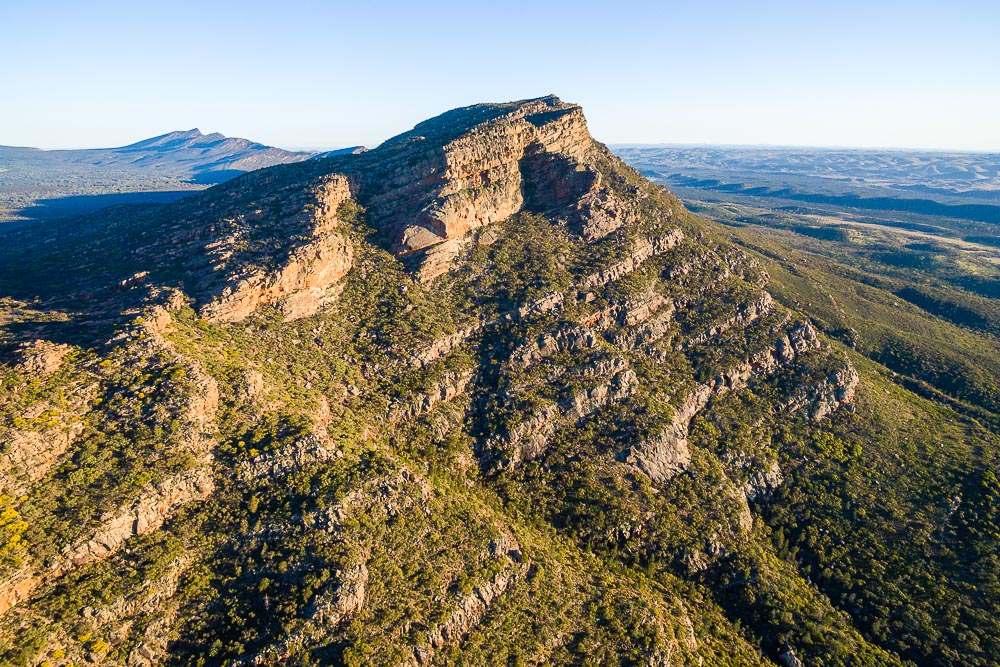 69069 Saint Marys Peak
69069 Saint Marys Peak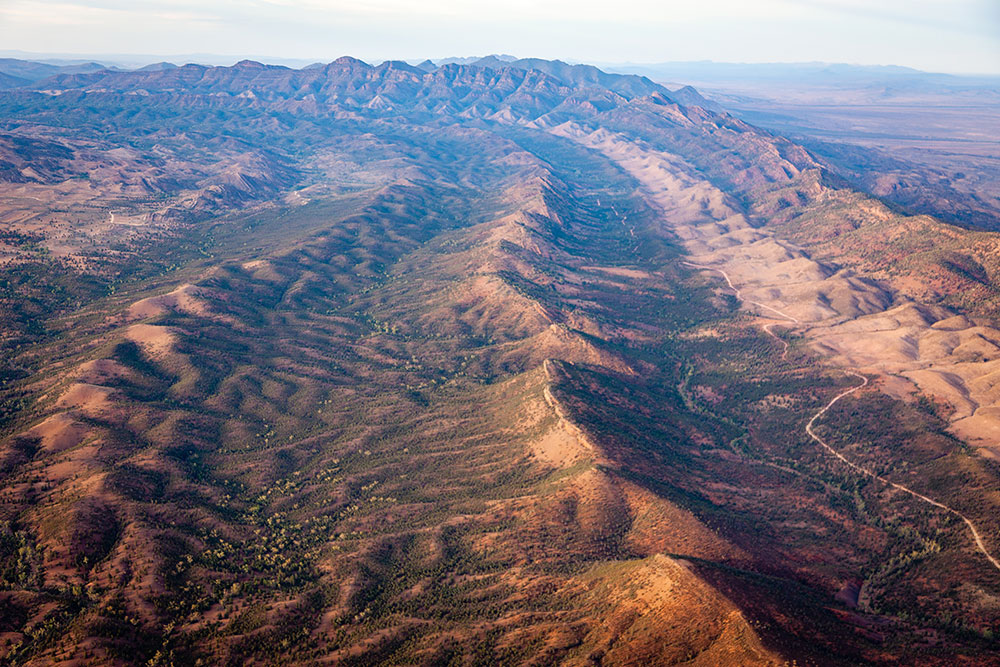 31412 Heysen Range
31412 Heysen Range
I have to mention the achievements of our two girls Hannah (9) and Gemma (8). Our 23 km walk to the summit of St Mary’s peak was hard enough for us oldies, but the girls managed without a whisper of complaint. The views from the peak make all the hard work worthwhile.
 69431 Razorback Lookout
69431 Razorback Lookout
Highlights for Visitors
- Wilpena Pound: This stunning natural amphitheatre is one of the most iconic landmarks in the Flinders Ranges. Take a scenic flight over the area for a bird's eye view, or explore the trails and gorges on foot.
- Brachina Gorge: This picturesque gorge is home to a number of important geological formations, including the famous Ediacaran fossils. It's a popular spot for hiking and photography.
- Blinman: This historic mining town offers visitors a glimpse into the region's past. Visit the restored copper mine, or take a scenic drive to the nearby Parachilna Gorge.
- Cultural Tours: Learn about the Adnyamathanha people's history, culture, and traditional way of life through guided tours and cultural experiences. Join a bush tucker walk, visit a cultural center, or listen to Dreamtime stories around the campfire.
Oodnadatta Track
The Oodnadatta Track is a historic outback route that spans over 620km from Marree in South Australia to Oodnadatta, passing through some of the most remote and rugged terrain in the country. This route follows the path of an ancient Aboriginal trading route and later became an important route for early European explorers and pioneers.
 71957 Oodnadatta Track
71957 Oodnadatta Track
History
The Oodnadatta Track was first established as a cattle droving route in the mid-1800s, connecting the cattle stations of the Northern Territory to the railhead at Marree. The route was also used by camel trains that transported goods between the outback towns and settlements.
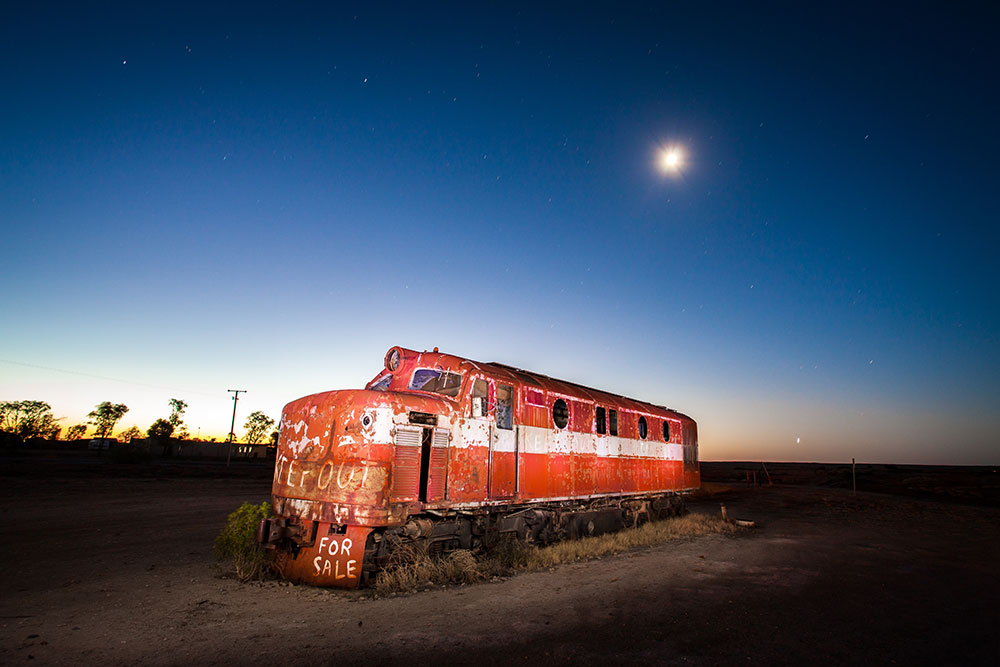 66940 Abandoned Loco
66940 Abandoned Loco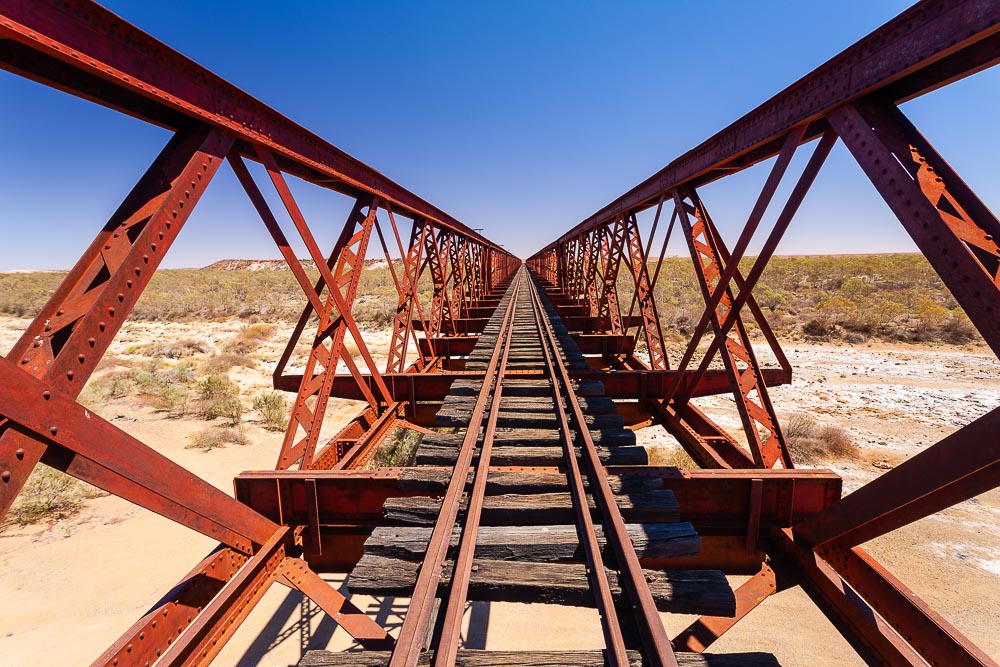 71492 Algebuckina Bridge
71492 Algebuckina Bridge
During the early 1900s, the track became an important communication route with the construction of the Overland Telegraph Line. The line connected Australia to the rest of the world through an undersea cable in Darwin, and its completion marked a significant milestone in Australian history.
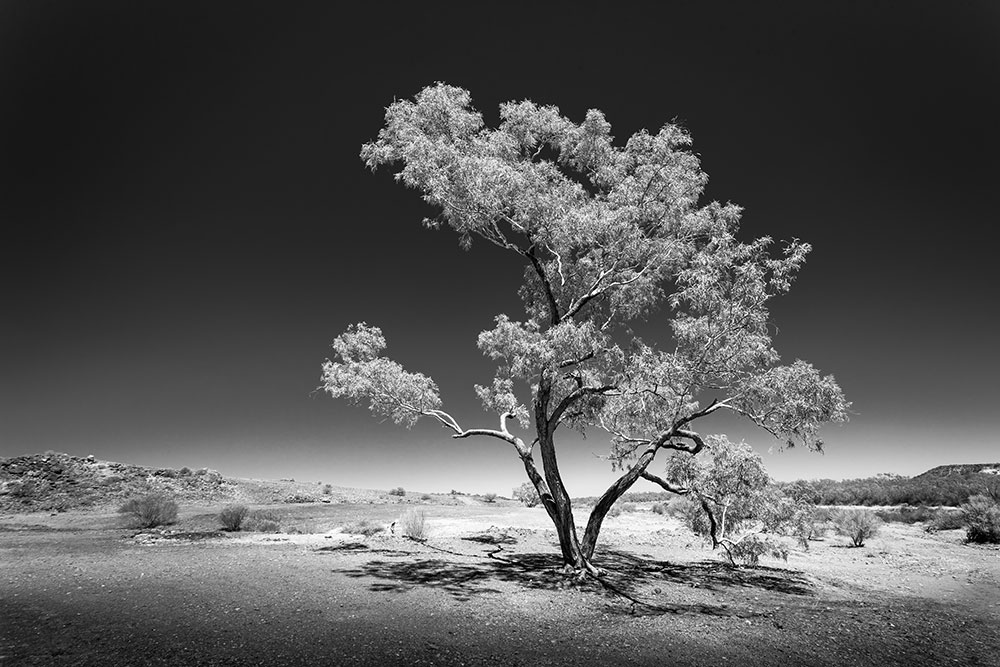 67287 Lone Desert Tree
67287 Lone Desert Tree
Today, the Oodnadatta Track is an iconic outback route that offers visitors a glimpse into the rich history and culture of the region.
Highlights for Visitors
- Lake Eyre: The Oodnadatta Track passes by the vast salt lake, which is the lowest point in Australia and a unique natural wonder. Visitors can take scenic flights over the lake or explore the surrounding national park.
- Mound Springs: These natural springs are a rare sight in the arid outback and provide a unique habitat for local flora and fauna. Visitors can take a dip in the warm waters or simply admire the stunning landscape.
- William Creek Hotel: This iconic outback pub is a must-visit for any traveller on the Oodnadatta Track. Visitors can enjoy a cold beer, a meal, and a chat with the friendly locals.
- Maree and Oodnadatta: These two outback towns are the start and end points of the Oodnadatta Track and offer a glimpse into the rich history of the region. Visitors can explore the old railway station, the telegraph station, and the local museums.
- The Painted Desert: This unique landscape features striking rock formations and vibrant colours, and is a popular stop along the Oodnadatta Track. Visitors can take a guided tour or explore the area on their own.
Marree
Marree is a small town located in the Outback of South Australia and marks the start of The Oodnadatta Track. Despite its size, it is a town rich in history and character.
Marree has a rich history that is closely tied to the early days of European exploration and settlement in Australia. The town was once an important stop on the old Ghan railway line and played a significant role in the development of the region. Visitors can explore the town's historic buildings, such as the old telegraph station, old railway stock and learn about its fascinating past.
 66940 Abandoned Loco
66940 Abandoned Loco
Here I’ve used a ‘painting by light’ technique to capture an abandoned diesel loco that is slowly being reclaimed by the desert. The process involves a long exposure, enabling me to walk around the engine ‘painting’ with my torch. The inclusion of a shining moon really sets the scene.
Algebuckina Bridge
The Algebuckina Bridge is a historic railway bridge located in South Australia, near the town of Oodnadatta. The bridge was built in 1892 as part of the Great Northern Railway, which was an important transportation route in Australia during the late 19th and early 20th centuries.
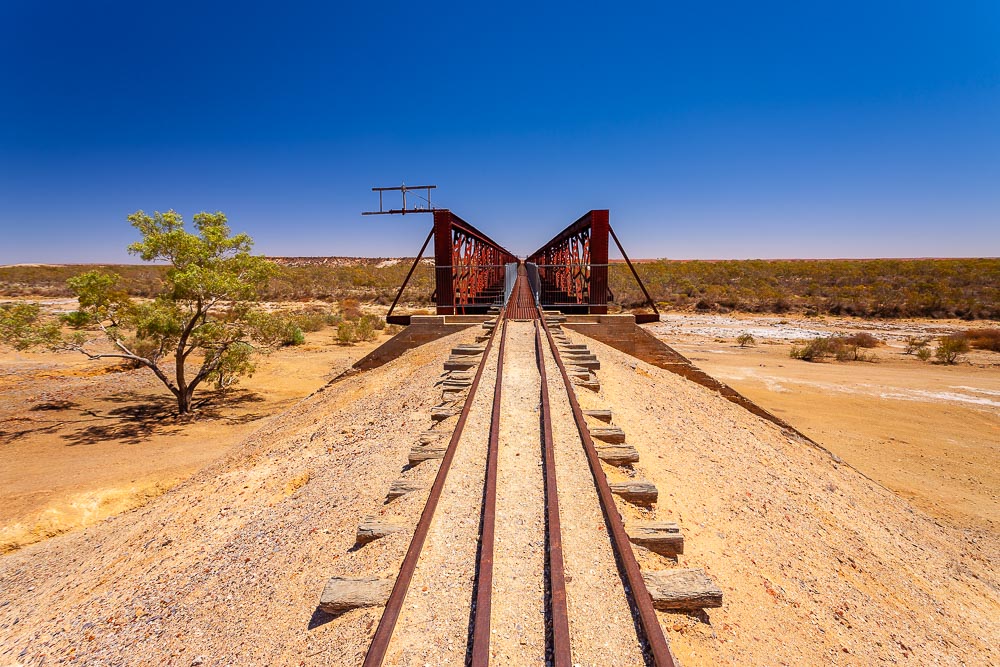 71491 Central Australian Railway
71491 Central Australian Railway 71492 Algebuckina Bridge Details
71492 Algebuckina Bridge Details
Today, the Algebuckina Bridge is a popular tourist destination and an important landmark of Australia's railway history. The bridge spans the Neales River, and its impressive steel truss structure is a testament to the engineering and construction techniques of the late 19th century.
William Creek and Lake Eyre
Located in the heart of the Australian Outback, William Creek is a small town that is often described as the 'Gateway to Lake Eyre'.
Despite its small size, William Creek is a town with plenty of character and charm. Visitors can explore the town's historic pub, chat with the locals, and learn about the town's rich history and heritage.
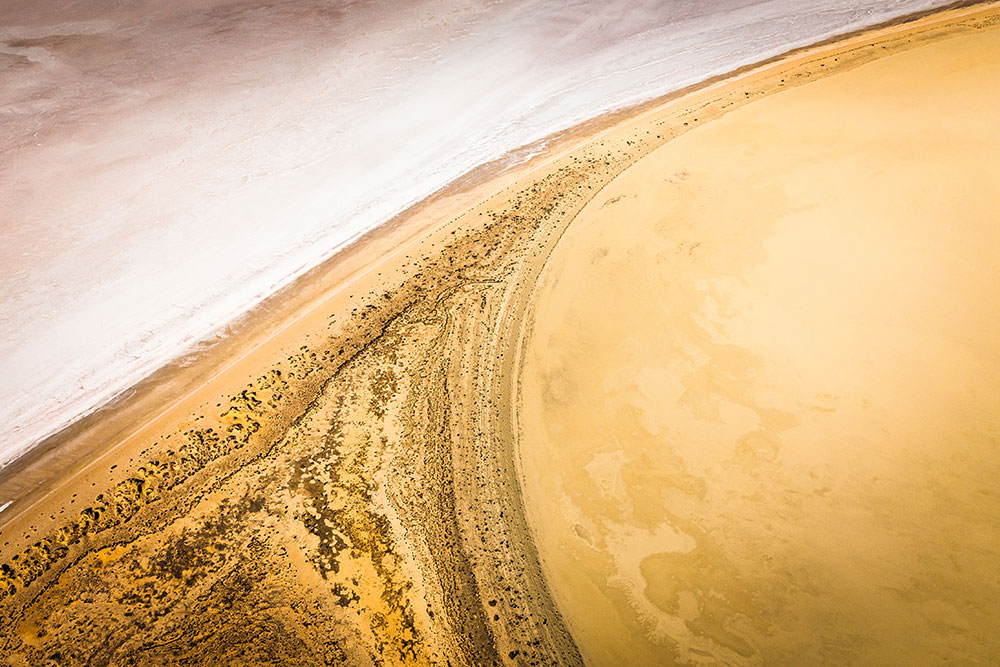 66952 Lake Eyre Details
66952 Lake Eyre Details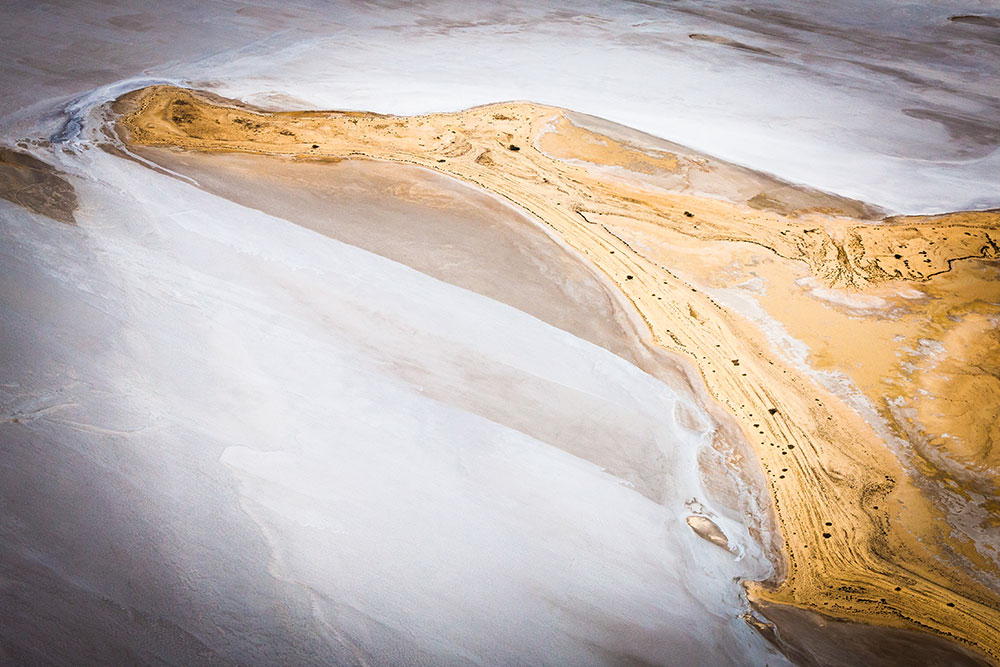 66953 Lake Eyre Aerial
66953 Lake Eyre Aerial
The Wonders of Lake Eyre
Lake Eyre is the largest lake in Australia, and a natural wonder that is not to be missed. It is a vast Salt Lake that is surrounded by stunning landscapes and home to a unique ecosystem of plants and animals. Visitors can take guided tours of the lake, go on scenic flights, or even explore the lakebed itself (when conditions allow).
 Lake Eyre Flight
Lake Eyre Flight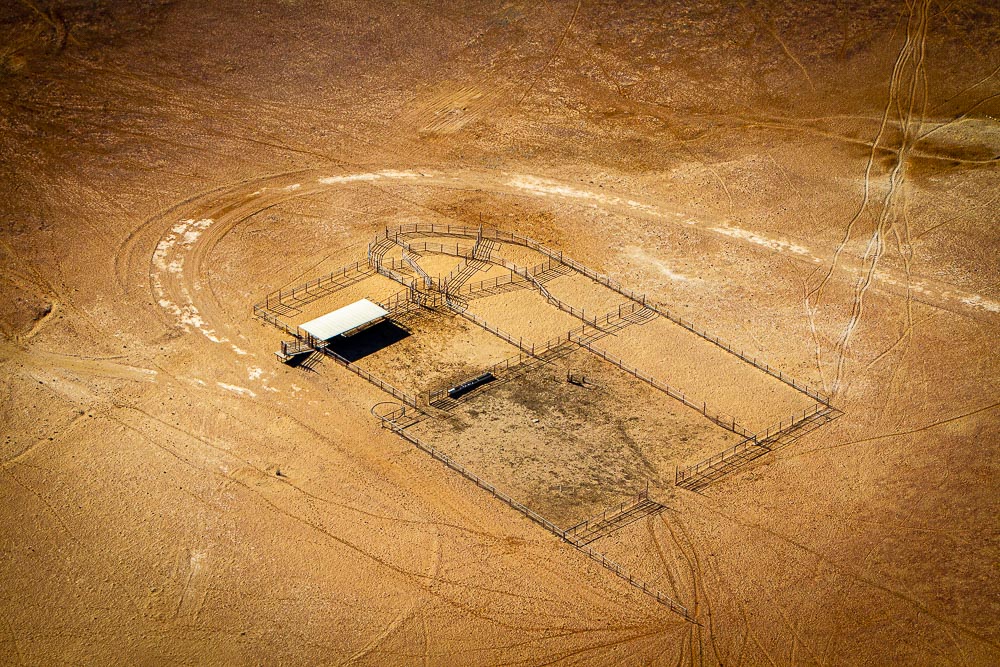 71280 Mustering Pen
71280 Mustering Pen
We charted a small plane and was taken aloft by our superb pilot Sarah for an unforgettable flight over the lake. From the air the scale of the lake becomes apparent – a salt pan the size of Belgium. Our flight took us over the southern end of North Lake Eyre, from arid stock pens onto the blinding salt lake itself.
My aim was to capture some of the abstract patterns formed by the receding waters, scenes akin to another planet.
The Painted Desert
The Painted Desert is located in the outback of South Australia, and it's an otherworldly landscape of colourful sandstone hills and valleys.
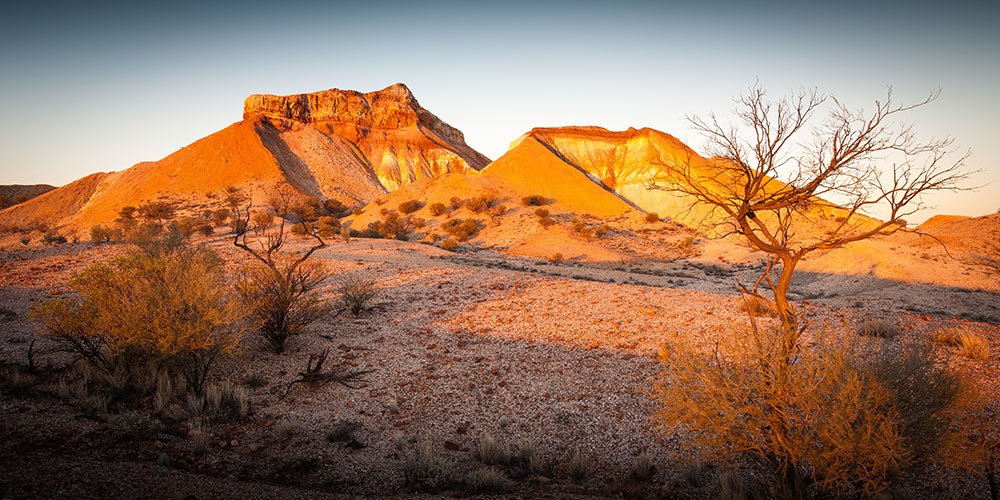 66942 Sunset at the Painted Desert
66942 Sunset at the Painted Desert
The beautiful outcrops of rock glow with subtle hues in the pre-dawn light. The colours are created from the effects of erosion from an ancient inland sea, the residue and the leaching of minerals in the soil create a wonderful mosaic of colours.
During this visit we stayed at Arckaringa Station, a place I can highly recommend. It’s a great place base yourself for a visit.
Coober Pedy
Coober Pedy is a unique and fascinating town located in the heart of the South Australian outback. Known as the "Opal Capital of the World," Coober Pedy is famous for its opal mines and the unique underground homes and businesses that have been carved into the earth.
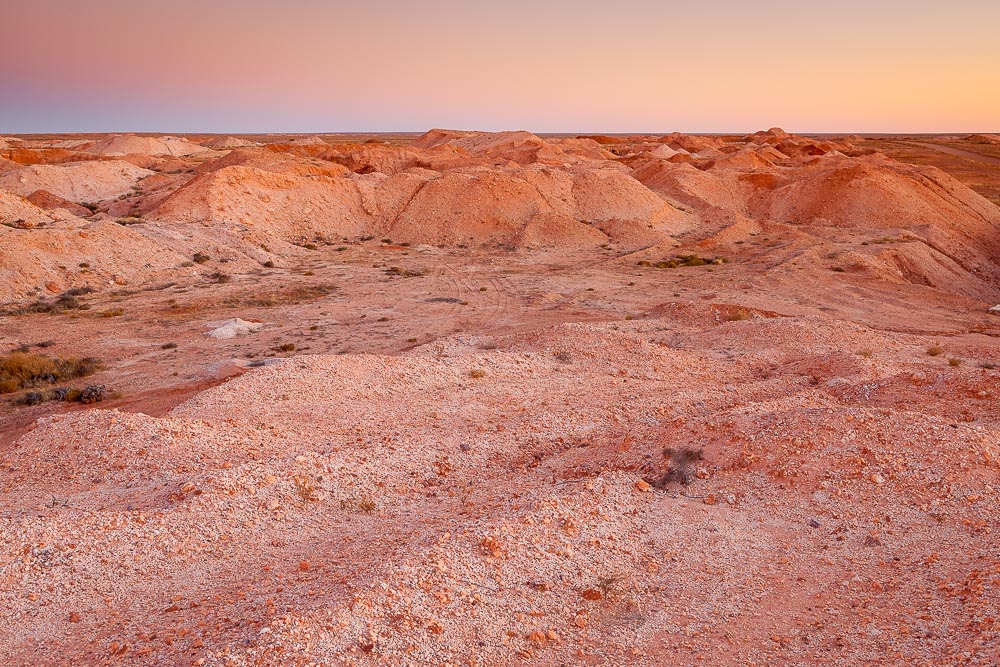 71969 Opal Mining Country
71969 Opal Mining Country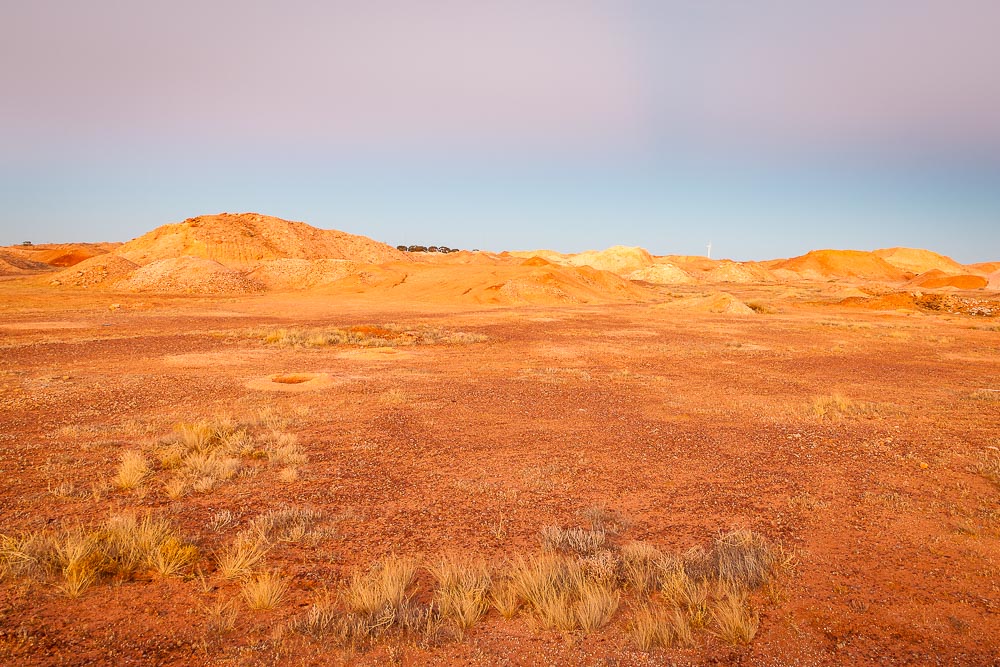 71971 Coober Pedy
71971 Coober Pedy
Visitors to Coober Pedy can take a tour of the underground mines to learn about the history and geology of the area, or visit the underground homes and churches that offer a glimpse into the town's unique way of life. Many of the homes are equipped with modern amenities, such as air conditioning and Wi-Fi, making them comfortable and livable despite their unconventional location.
 66954 Coober Pedy Sign
66954 Coober Pedy Sign
Coober Pedy is also home to a number of museums and galleries, showcasing the area's rich Aboriginal history and culture, as well as the art and craftsmanship of the local opal industry.
Lake Hart
Visiting Lake Hart in South Australia and it was truly a breathtaking experience. This natural salt lake is situated on the outskirts of the Woomera Prohibited Area, and its serene surroundings make it an ideal spot for travellers wanting to overnight after one of those long outback journeys.
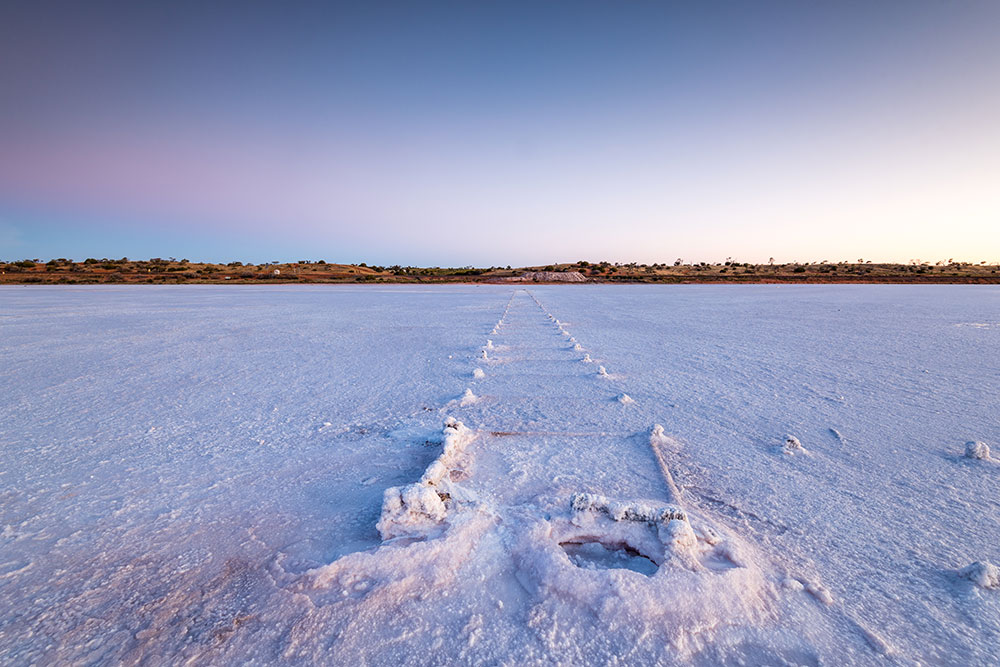 69429 Salt Lake
69429 Salt Lake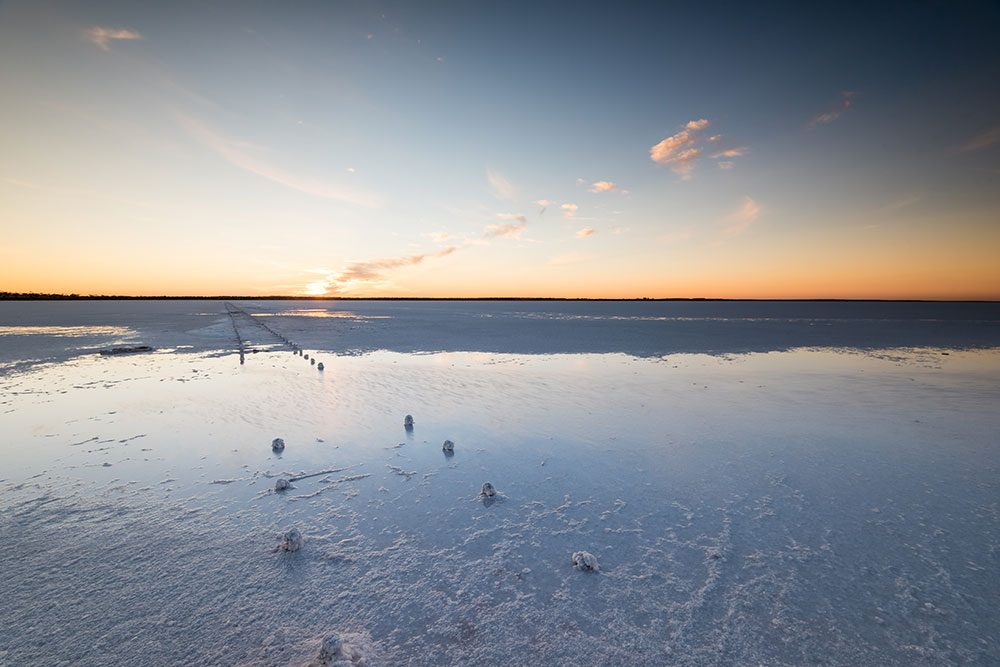 69427 Old Boardwalk Posts
69427 Old Boardwalk Posts
During our visit, we were lucky enough to witness the lake starting to flood, which was both an awe-inspiring and humbling sight. Watching the water levels rise and the reflection of the sky on the lake's surface was truly a remarkable experience.
One of the best ways to explore Lake Hart is by taking a leisurely stroll around the lake's perimeter or out onto the lake itself. The lake's bright white salt shores and crystal-clear water make for a stunning view, and the surrounding hills add an element of grandeur to the entire experience.
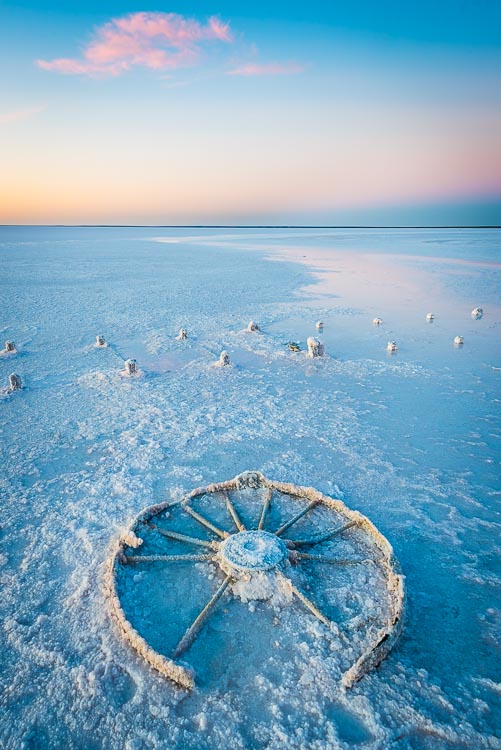 68085 Lake Hart Relics
68085 Lake Hart Relics
The dune areas surrounding the lake is dotted with several campsites, and spending a night under the stars is a great way to connect with nature and experience the tranquillity of the outback.